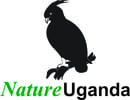Conservation of the Lesser Flamingo

The key project sites are Munyanyange and Kasenyi. Lake Munyanyange is a small crater lake adjacent to Katwe Township, just before Katwe salt lake which is only 200m away. The lake is part of Kazinga Wildlife sanctuary. It serves as a watering point for animals from Queen Elizabeth National Park. The lake is susceptible to activities of domestic animals and humans. Kasenyi Crater lake is located just outside Queen Elizabeth National Park. Local communities around this lake carry out salt mining as an income generating activity. Because of livestock grazing and increased human activities, some of the birds may stay away from these two named lakes.
The overall goal of the project is to improve quality and sustainability of the key sites in South-Western Uganda. The main purpose of the project is to minimize human and other disturbances to Flamingo habitats. This will be achieved through promoting sustainable and compatible land use practices, community awareness and strengthening flamingo monitoring programs. Strategic partnerships will be formed to implement the project.
Objectives
- Protect, rehabilitate and restore degraded land, and lake-catchment vegetation
- Raise awareness and understanding of migratory water bird migration.
- To realize these objectives the project will;
- Undertake rehabilitation and restoration of degraded areas
- Conduct sensitization of stakeholders on water bird migration and conservation
- Demonstrate organic farming methods and
- Strengthen stakeholder partnerships through information sharing and community participation. In particular, Kanyiginya Drama Actors will be used in community mobilization and sensitization on the plight of the Lesser Flamingo and environmental conservation in general.
Through the above project actions, it’s expected that communities will have efficient methods of salt extraction, effective waste disposal methods, and increased economic incentives for flamingo conservation, sustainable use of environmental resources, and alternative livelihood sources.
With support of the AEWA grant, different partners will be brought together to establish a community driven conservation effort for the Lesser Flamingo in Western Uganda.
The project activities will address mandates of District Development Plans, Queen Elizabeth Conservation Area Management Plan, National Biodiversity Strategy and Action Plan for Uganda, National Development Plan at the country level. It will also address mandates of the Convention on Migratory Species, AEWA, and Convention on Biological Diversity as well as principles of Sustainable Development.
Local people will benefit from increased productivity and sustainable use of local resources and increased capacity for environmental management and advocacy. Conservation NGO’s will benefit from government good will and networks. National wildlife policy makers and implementers will benefit from stake holder buy-in and involvement and positive attitude towards wildlife conservation.
Related Article: Lesser Flamingo Conservation Project Successfully Completed in Uganda

